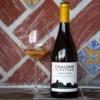Interestingly, even though many places around the world have been hit hard by the economic crisis of the last decade – which usually leads to people consuming more alcohol – the total alcohol consumption worldwide has decreased by 1.6% in 2018, according to the IWSR.
The consumption of hard liquor has increased, but beer and wine, which still comprise most of the alcohol purchased and consumed, has entered a slight but noticeable decline.
This can be attributed to recent trends of heightened health-consciousness behavior. After all, alcohol is “empty calories” and many young people are going teetotal, or, as they like to call it “sober curious” – significantly reducing their alcohol intake.
Because of this, alcohol-free beers and mocktails (like the popular virgin mojito) are becoming the popular drinking alternative for this category of people. Because they are used to drinking in social occasions like going out to bars, nightclubs, and parties, they can’t fully relax without the familiar feel and taste of an alcoholic beverage in their hands.
Which is where alcohol-free drinks come in. Still, the US’s beverage market only has 0.5% of such drinks, contrasted to the UK, which has almost tripled that amount – 1.3%. Overseas drinking fads, such as the craft beer craze, usually make their way to the US in time, and this is no different.
Breweries are quick to adapt to new markets, and Heineken has recently introduced their completely alcohol-free beer, the Heineken 0.0, which has been well-received in Europe. It is being marketed as a product for people who enjoy the taste of beer, but doesn’t want to get inebriated for whatever reason.
Bars are also getting into this, with more and more elaborate and tasty mocktails being served. Their prices are comparable to their full-fledged alcoholic cousins, so bars can still make a tidy profit off of them.




































Comment Template